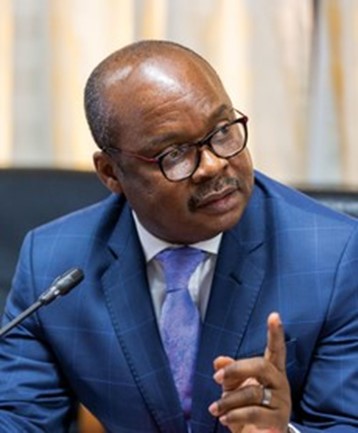By Joshua Worlasi AMLANU
The Bank of Ghana (BoG) has moved to calm the forex markets, with Governor Dr. Ernest Addison assuring that the central bank has built up “enough reserves to tackle the pressures” battering the cedi in recent weeks.
Speaking at the launch of the new commercial paper market, Dr. Addison acknowledged the cedi has faced “some headwinds” after a period of relative stability. However, he indicated that the BoG is “giving much attention” to the issue and has the firepower to intervene.
“The exchange rate has been generally stable until recent weeks when some headwinds have been observed in segments of the market. But this is given much attention as the bank has built up enough reserves to tackle the pressures on the market,” Dr. Addison said in a speech read on his behalf.
The assurances come as the cedi has taken a pounding in 2024 amid soaring corporate dollar demand and a resurgent U.S. currency. The local unit has fallen around 14 percent against the greenback since January.
Financial analysts warn the outlook for foreign exchange inflows remains clouded, putting further pressure on the stressed cedi in the coming months.
“The near-term outlook for FX supply is decidedly negative due to a panel of fundamental factors,” said Constant Capital in a market review, citing elevated inflation, low cocoa output and constrained portfolio inflows.
GCB Capital noted that while gross international reserves grew modestly to US$6.2billion in March, providing 2.8 months of import cover, usable reserves have dwindled to just US$4billion – enough for only 1.8 months of imports after factoring out encumbered assets.
“These levels offer limited protection against balance of payment shocks, indicating that the BoG will likely continue redirecting hard currency away from the interbank market to bolster reserves in the medium term,” the firm stated.
Databank’s weekly updates suggests that the BoG has already injected an estimated US$270million into the forex market this year through spot and forward interventions, following US$713million in support during 2023.
But analysts believe much more firepower may be required, especially with credit to the private sector described by the governor himself as “weak” due to lenders holding back.
In a bid to spur bank lending, the BoG recently introduced a “dynamic cash reserve ratio” policy tying required reserves to banks’ loan books – a “strategy to create the incentive for banks to undertake effective intermediation”.
Under the new policy framework, banks with Loan to Deposit Ratios above 55 percent must maintain a 15 percent CRR, those between 40-55 percent face a 20 percent CRR, and banks below 40 percent are subject to a 25 percent CRR.
For now, all eyes remain locked on the BoG’s forex buffers and its willingness to deploy them amid the cedi’s depreciation.










